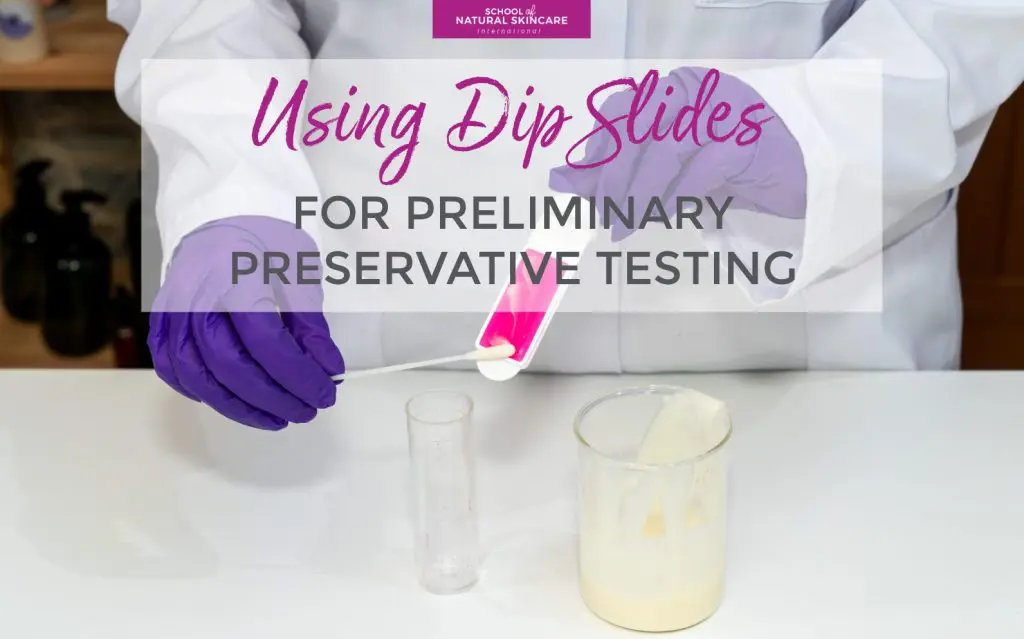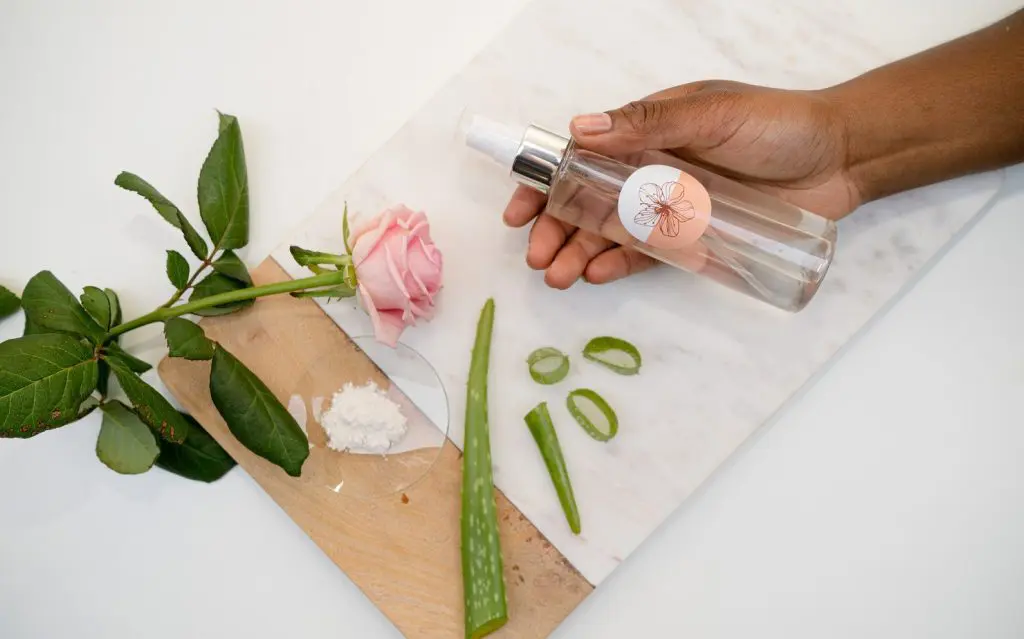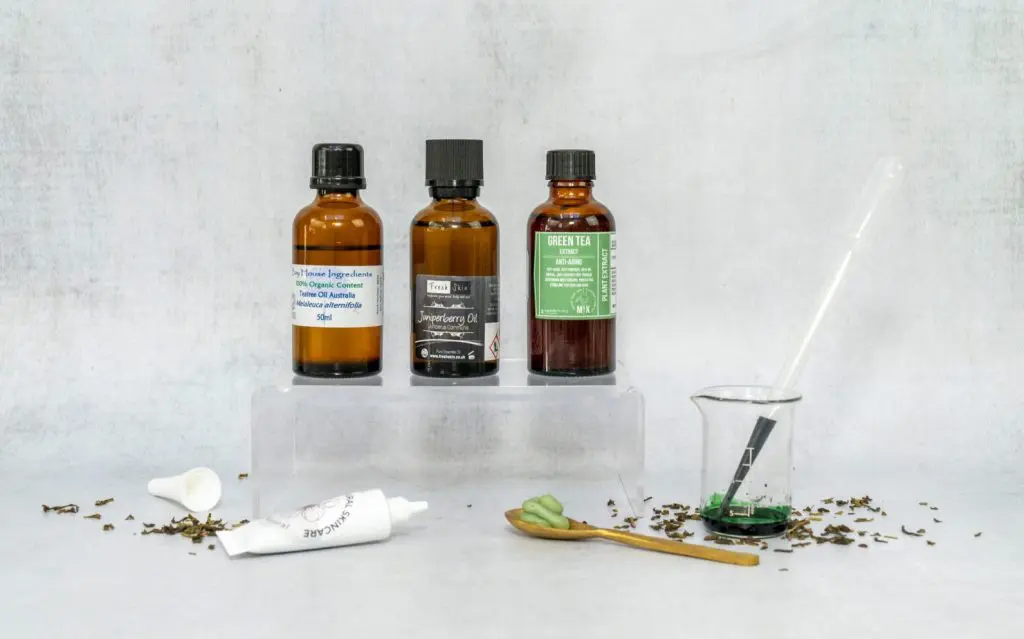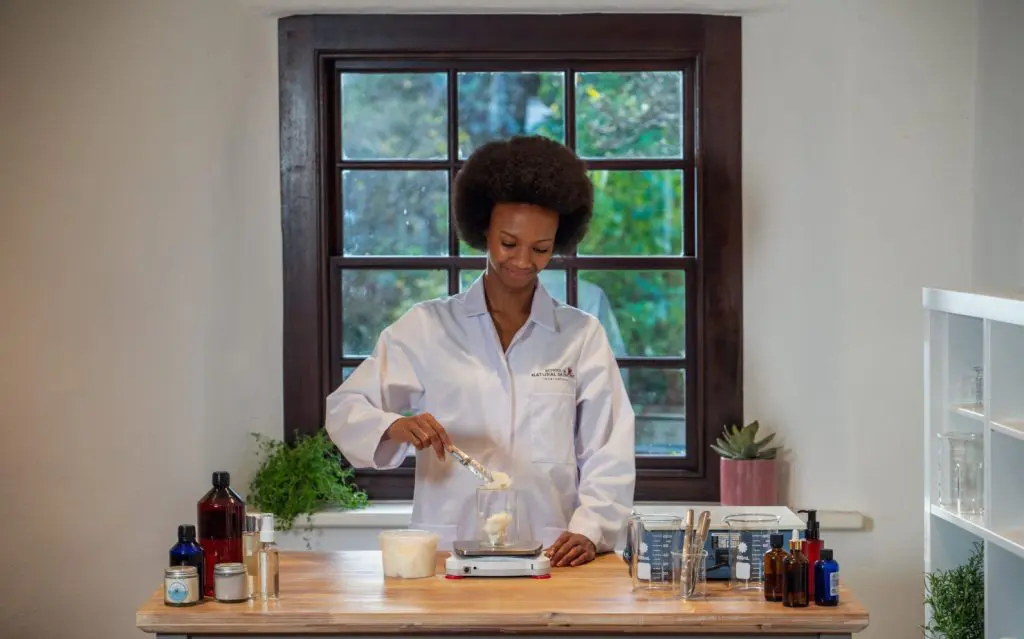You’ve formulated your natural skincare products and you need to have them professionally tested to see how well it is preserved against microbial growth. But professional cosmetic testing, known as Preservative Efficacy Testing (PET), or challenge testing, can be expensive and time-consuming.
What if there was a way to conduct DIY preservative tests on your cosmetic products at home before sending them for PET? You’d have an idea of whether your products are close enough to pass. Testing cosmetics at home enables you to adjust your formulations accordingly, before sending them to a lab.
Say hello, to dip slides and preliminary microbial testing for cosmetics that can help you assess the quality of your natural cosmetic products!
What are microorganisms?
Microorganisms are tiny living organisms that live practically everywhere in the world. You’ll find them in hot underwater springs, deserts, rocks, even in our intestines and on the surface of our skin.
In cosmetic science we are usually just interested in two microorganism groups (or ‘microbes’):
- Bacteria (either gram-positive, or gram-negative).
- Fungi (yeasts and molds).
Cosmetic products that contain water are a perfect breeding ground for microorganisms. The mixture of water, oils, sugars, protein and vitamins, along with access to air and a mild, neutral pH, ensures that any microorganisms entering the product can grow and replicate within it. This can make the product unsafe for consumers.
This is why adequately preserving cosmetic products is so important. And the only way to know for sure that they are adequately preserved is through product testing.
How can you test for bacteria and fungi in your natural cosmetic product using dip slides?
Dip slides are elongated plastic plates/slides with a solid growth medium on them. In cosmetic testing, one side of the slide contains a medium for bacterial growth, the other side contains a medium for fungal growth.
Each single living microorganism on the growth medium will eventually form a visible structure, called a colony. Bacterial and yeast colonies appear like shiny circular drops on the surface of the medium, while mold colonies look like fuzzy circles.
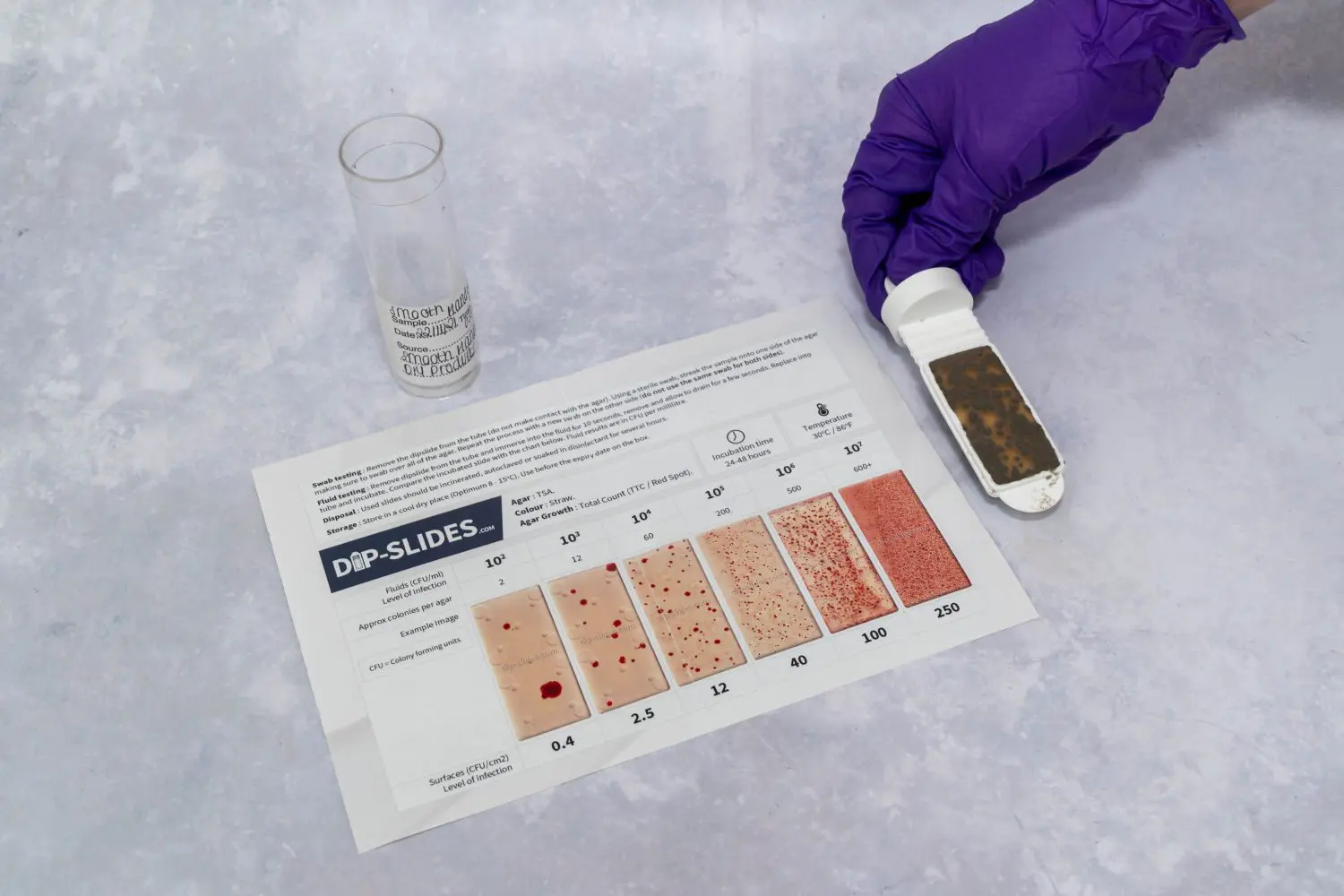
With dip slides, you can check how many microorganisms are currently present in your product. You cannot obtain any information about how well the product would resist microbial growth if more contaminants were introduced into it, for example during consumer use. This can only be determined by a PET, in which the sample is inoculated with microorganisms and monitored to see if the preservative works effectively to kill them.
However, PET tests can cost around £200 or more. By checking the product at home, it can give you an approximate idea of how well the product is preserved, meaning you can avoid paying for failed PET tests and have peace of mind about the appropriate time to have official preservative efficacy testing.
If you are not planning on having your products challenge tested (for example you are not intending to sell your products, or you are testing out a couple of different product variations), home testing with dip slides is a good way of making sure you are not using contaminated products which are not safe for use.
Dip slides can also be used to quickly test new batches of raw materials in your lab. Usually the supplier checks for the presence of microorganisms in raw materials and encloses the result in a certificate of analysis (CoA), but it can be useful to check the ingredients yourself, especially if you are noticing any microbial spoilage in your products.
Dip slides are not a substitute for PETs
While dip slides are used for preliminary microbiological testing, they are not a replacement for professional laboratory microbiological testing.
Professional laboratories have highly trained personnel, in a sterile environment, with high-quality lab equipment. Their tests are more precise with readings and measurements that can’t be obtained using home equipment, and they also test for a wider range of microorganisms.
When a lab performs PET, they contaminate the product with known species and a number of microorganisms (to simulate the introduction of microorganisms from skin and environment during use). The lab then checks if the number of microorganisms in the product increases or decreases over time, or remains the same. In a well-preserved product, the number for viable microorganisms should decrease at a certain rate.
The benefit of dip slides is that you can see what is going on with the microbiological quality of your natural cosmetic product, at home, for a fraction of the cost of a PET. You will be able to see if your natural cosmetic product is ready to be sent off for a professional test, or if its formulation needs to be tweaked in order to get a result closer to a pass.
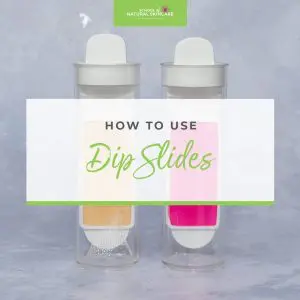
If you’d like to know more about dip slides and how they can benefit your natural and organic cosmetic products, you’ll want to check out our Lab Skills class: How to Use Dip Slides for Preliminary Microbiological Testing in the Natural Cosmetic Formulation Club.
In this class, you’ll learn more about the science behind microbiology, bacteria and fungi, and two specific growth mediums you should look for when buying dip slides.
We’ll help you calculate the amount of microorganisms (known as colony forming units, or CFUs) that could be present in your natural and organic beauty products as well as how to interpret the results.
How to Use dip Slides for Preliminary Microbiological Testing will also show you how to to use dip slides for cosmetic testing, with beautiful photos for guidance, and discuss the equipment you will need and where to buy them.
Not a Member?
No problem! Simply check out our Natural Cosmetic Formulation Club page to find out how you can join the Club, get access to How to Use Dip Slides for Preliminary Microbiological Testing and discover more exciting material that’s released on a regular basis.
If you have any questions, please email us at hello@schoolofnaturalskincare.com

